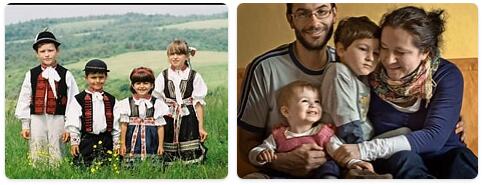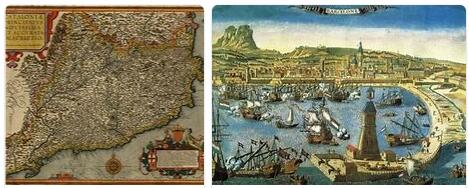Luxembourg 2014
Yearbook 2014
Luxembourg. A five-year deadlock in the EU was broken in March, when Prime Minister Xavier Bettel announced that Luxembourg and Austria were now prepared to join the EU savings directive aimed at preventing tax fraud. The two countries had opposed participating in the exchange of tax information as long as non-member states in Europe did not also claim their banking secrecy.
Luxembourg population in 2020 is estimated at 625,989. A journalist group revealed in November that for a long time Luxembourg has helped over 300 foreign large companies with tax planning. The European Commission stated that the information would be investigated. The revelation was troublesome for Luxembourg but also for the new President of the European Commission: the country’s former Prime Minister and Finance Minister Jean-Claude Juncker. The question was how much Juncker, who took up his new top position just days before, knew about the “Luxleaks” scandal. He was now assured that the European Commission would carry out an independent investigation of the data.

Country data
Area: 2586 km2 (world ranking: 169)
Residents: 599,000
Population density: 232 per km2 (as of 2017, world ranking: 165)
Capital: Lëtzebuerg / Luxemburg / Luxembourg
Official languages: Luxembourgish, German, French
Gross domestic product: 55.4 billion euros; Real growth: 2.3%
Gross national product (GNP, per resident and year): 70,260 US$
Currency: 1 Euro (Euro) = 100 cents
Embassy
Klingelhöferstr. 7, 10785 Berlin
Telephone 030 2639570,
Fax 030 26395727http: //berlin.mae.lu
Government
Head of State: Henri, Head of Government: Xavier Bettel, Exterior: Jean Asselborn
National holiday: 23.6. (Celebration of the birthday of Grand Duke Jean)
Administrative Division
3 districts with 12 cantons
Form of Government
Constitution of 1868
Parliamentary Monarchy (Grand Duchy of)
parliament (Chamber vun Députéirten / Chamber / Chambre des Députés) with 60 Member., Elections every 5 years
elective from 18 yrs.
Population of: Luxembourg, last census 2011: 512,353 residents. Proportion of foreigners 2017: 47.6%
Cities (with population): (As of 2018) Lëtzebuerg / Luxemburg / Luxembourg 116,323 inh., Esch-Uelzecht / Esch an der Uelzecht / Esch-sur-Alzette 35,040, Déifferdeng / Differdingen / Differdange 26,193, Diddeleng / Dudelange / Dudelange 20,869, Péiteng / Petingen / Pétange 18,688 Suessem / Sassenheim / Sanem 16,780, Hesper / Hesperingen / Hesperange 15,246
Religions: 70% Catholics, 2% Protestants, 2% Muslims; Minorities of Jews; 25% without religion (as of 2006)
Languages: Luxembourgish (Moselle-Franconian dialect), German, French (also legal language)
Employed by economic sector: Agriculture. 1%, industry 12%, business 87% (2017)
Unemployment (in% of all labor force): 2017: 5.6%
Inflation rate (in%): 2017: 2.1%
Foreign trade: Import: US $ 22.6 billion (2017); Export: 15.7 billion US $ (2017)
Economic conditions
Luxembourg is the country that boasts, among all the members of the European Union, the highest GDP per capita (about 81,000 dollars in 2008). The mining of iron ore, which had long been the basis of the Luxembourg economy, has ceased altogether (the last mine was closed in 1981) and the steel industry has further shrunk. Alongside the steel industry, the mechanical, rubber, artificial textile fibers, fertilizers, cement, ceramics and tobacco industries are active.
Only about 1.2% of the active population is engaged in agriculture: potatoes, barley and oats are grown in the north of the country, while wheat, vines and fruit trees thrive in the south. Characteristic is the cultivation of roses. Breeding is developed (cattle, pigs and poultry), which supports a thriving food industry (meat, milk, butter, cheese, eggs). The gradual contraction of the primary and secondary sectors was accompanied by a significant increase in service activities, which in 2007 occupied 80.6% of the active population and contributed to a large part of the global GDP: most of these are services financial and tourism, and those, which however mainly employ foreign personnel, related to the functions that the Luxembourg performs as the headquarters of important bodies of the European Union.
The Luxembourg makes use of a developed communications network, which includes railway sections of international lines (Milan-Berne-Brussels) and others, of a local nature, which radiate radially from the capital to Belgium and Lorraine. Thanks to the canalization of the Moselle, the country has direct access to navigation on the Rhine via the river port of Mertert.
Climate
According to topb2bwebsites, Luxembourg has a temperate Central European climate, which is influenced by Atlantic sea winds and is characterized by mild winters and moderate and therefore pleasant summers. The air is usually mild and humid.
The annual rainfall is 782.2 mm. The average annual temperature is 9 ° C. In January, the coldest month, the average temperature measured is around 2 ° C. The highest temperatures are usually recorded during the summer months of July and August. At this time the average temperature is around 15-25 ° C.
In the north of the country, the Ösling, it is usually a little cooler and there is also more precipitation.


